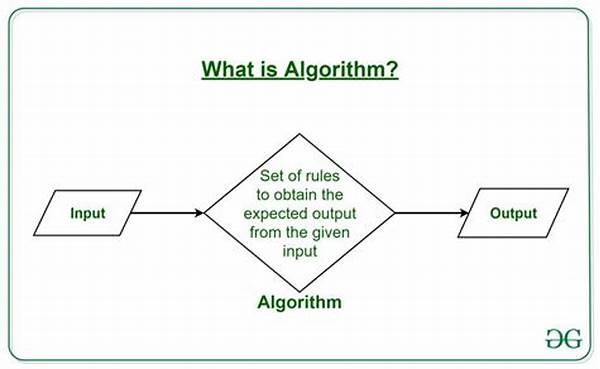In a world where language is the backbone of communication, understanding it contextually is crucial. Imagine chatting with a friend online, and you type out “I’m feeling blue.” Without context, one might think you’ve turned Smurf overnight! Herein lies the importance of contextual language understanding algorithms. These sophisticated systems ensure that computers grasp not only the words but also the meaning behind them, based on the context they’re used in. As our reliance on technology grows, so does the need for machines to understand human languages as seamlessly as we speak them. With every text message, book, or Twitter post, lies a rich tapestry of language nuances that these algorithms decipher. Their prowess isn’t just limited to understanding; they predict, suggest, and even translate, turning once-robotic interactions into fluid conversations.
In modern marketing, the way content is understood can make or break a campaign. It’s like telling a joke—timing and context are everything. Brands leverage contextual language understanding algorithms to ensure their message doesn’t just land, but resonates. Imagine a perfume ad, where instead of merely listing scents, it evokes memories of autumn walks with every fallen leaf scent. These algorithms power such emotive narratives, presenting offerings as experiences rather than mere products.
Moreover, these technological marvels are personalization’s stalwarts. They analyze user data to tailor content that speaks directly to individual preferences. Did you recently scour the web for vacation spots? Prepare for your feed to turn into a travelogue. But it’s not just retail and ads benefiting. Educational platforms harness them to create adaptive learning modules. Students get resources suited to their pace, ensuring no one is left behind in the digital age’s knowledge race.
How Contextual Language Understanding Algorithms Enhance Communication
By now, you might be pondering—how exactly do these algorithms accomplish such feats? It’s all about breaking language down into digestible data chunks, then analyzing the relationships between words using neural networks and machine learning. Picture it as solving a linguistic jigsaw puzzle where each piece fits together to form a coherent picture. From identifying slang appropriate for Gen Z to understanding multifaceted legal jargon, these algorithms are transforming industries with every keystroke.
—
Unlocking Potential: The Power of Contextual Language Understanding Algorithms
Languages, by nature, are intricate, layered, and dynamic. Growing up, we all had that tongue-twisting phrase or idiom that left us puzzled. But what if machines could understand and even predict such complexities? Welcome to the realm of contextual language understanding algorithms, where words come to life in meaningful ways. Let’s explore the potential and purpose of these algorithms further.
For businesses, employing contextual language understanding algorithms is like gifting them a linguistic Swiss Army knife. Whether enhancing customer interactions through chatbots or personalizing marketing messages to resonate more deeply, the possibilities are endless. Consider a customer service scenario where an AI chatbot not only recognizes frustration from a customer’s words but responds with empathy and solutions tailored to the context. Talk about elevating the customer experience!
Emphasizing the Need for Contextuality
Without context, communication resembles a game of broken telephone. Ever misinterpret a text because you missed a sarcasm drip? Contextual language understanding algorithms mitigate such mishaps by recognizing tone, cultural nuances, and past interactions. They don’t just process words—they perceive sentiment. Through AI’s power, machines gauge whether a review expressing “great service” was sincere or steeped in irony.
To educators, these algorithms are akin to the thoughtful librarian who knows just the right book for a curious reader. Online learning platforms such as language apps benefit greatly by providing lessons that adapt to a user’s growing proficiency, making learning more engaging and less intimidating.
The Mechanics: Behind the Algorithms
Delving into the mechanics, these algorithms utilize vast datasets to train models, ensuring they grasp minute nuances. By simulating neural pathways similar to the human brain, they continuously evolve, learning from every interaction. Be it context hidden in commas or buried within rhetoric, these systems are vigilant annotators of our digital dialogues.
Chat applications, social media platforms, and even media outlets are revolutionized by harnessing this technology. It’s akin to having a sophisticated decoder ring, transforming any language conundrum into clear, concise insight. And as society becomes increasingly interconnected, the demand for accurate, context-based understanding is paramount.
Bridging the Gap with Context
As customer interactions move predominantly online, businesses continuously seek the edge that sets them apart. Contextual language understanding algorithms promise that edge. They bridge the gap between mere information exchange and meaningful communication, facilitating true understanding.
Real-World Impacts
Imagine the future—doctors relying on translations that consider medical jargon and cultural phrasing, journalists using tools to gauge public sentiment accurately, and travelers speaking with locals aided by immersive AI tools. It’s a global conversation waiting to happen, made possible by these algorithms.
Reflecting on their significance, these algorithms are more than computational wizardry—they are the unsung heroes of effective digital communication. Whether refining search engine results, optimizing virtual assistants, or writing this very article, their influence is ever-present and expanding.
Key Objectives of Contextual Language Understanding Algorithms
Streamlining interactions between businesses and clients by personalizing exchanges and anticipating customer needs through contextual insights.
Empowering personalized learning experiences by adapting content to individual student strengths and weaknesses.
Tailoring advertisements and content that resonate more deeply with target audiences through context-rich data analysis and insights.
Facilitating clearer communication, ensuring professionals understand jargon accurately in context, minimizing critical misunderstandings.
Bridging linguistic and cultural gaps, promoting mutual understanding and seamless exchange of ideas across borders.
The art of interpreting language contextually is nothing short of a miracle. Imagine engaging with a virtual assistant, and it comprehending not just what you say, but what you mean. The key to unlocking this potential lies within contextual language understanding algorithms, tools at the forefront of digital evolution.
As businesses and platforms implement these algorithms, they offer services that aren’t merely functional—they’re transformative. The world is talking, and these algorithms ensure nothing gets lost in translation.

